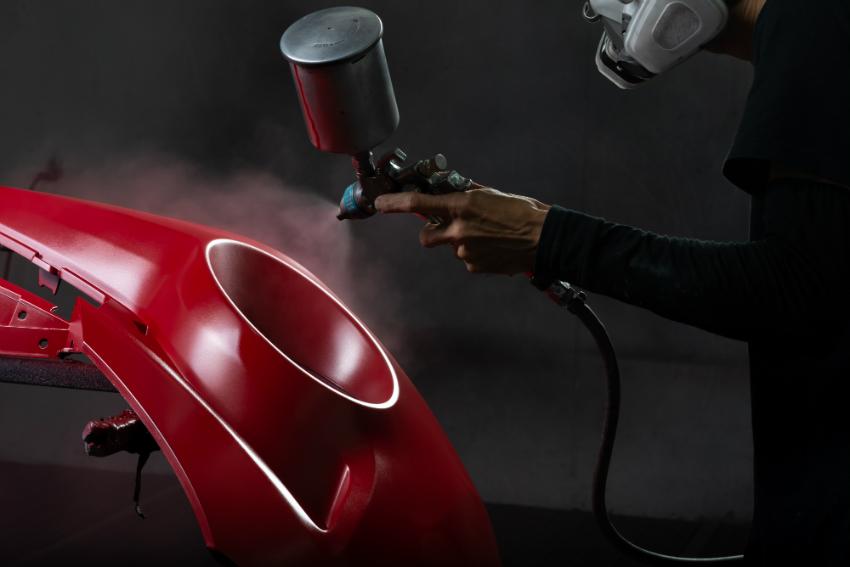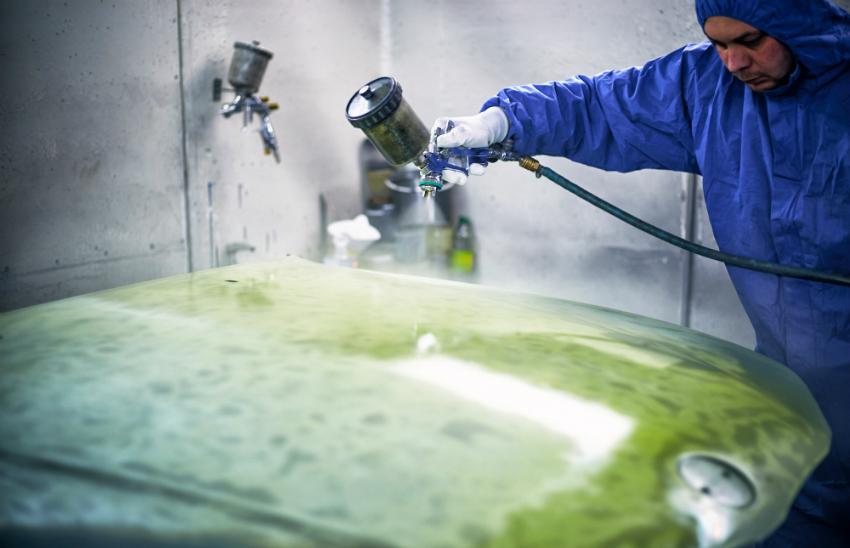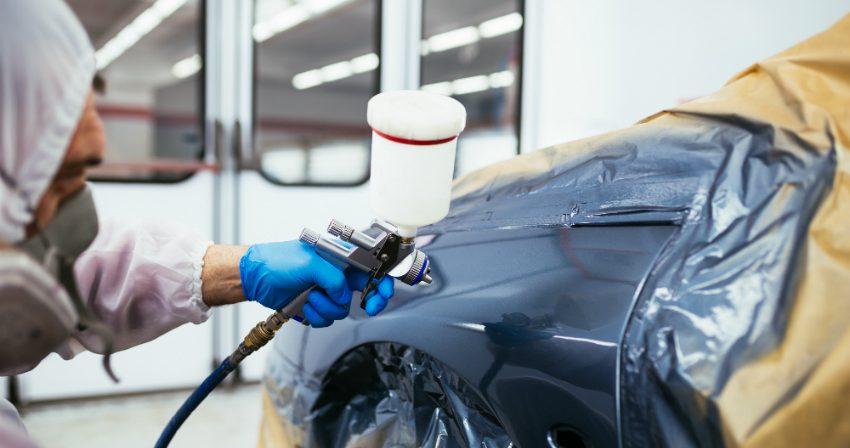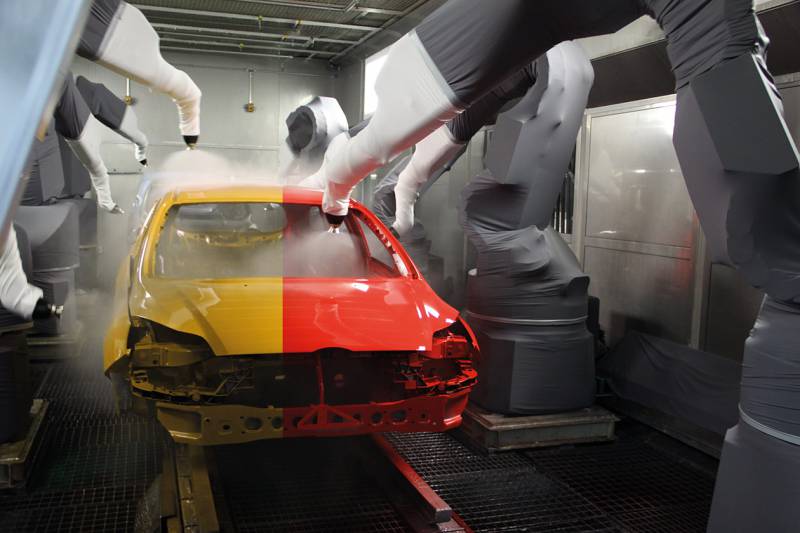Decorative surfaces in shiny colors are a beautiful sight for everyone. As a protective layer against mechanical and weather-related damage, moisture, or corrosion, surface coating plays a key role. A durable paint finish is one of the ways to meet the various demands placed on a modern coating. However, especially in the past, paints had a high content of solvents that evaporated during drying. Today, these volatile solvents are less commonly used due to their harmful impacts on people and the environment. Modern technologies and paint formulations have significantly lowered this content, which in some cases has been reduced to 0%.
What are VOCs?
Paints used for surface coating have historically contained and in some cases, still contain solvents. These ensure an even distribution of the various paint components, reduce the viscosity of the paint, and improve wetting behavior. They play an essential role in the coating process, with the more volatile solvents facilitating the drying process after painting.

These volatile organic compounds are known as VOCs. According to the Environmental Protection Agency (EPA), they are categorized based on their boiling range into very volatile, volatile, and semi-volatile substances. All volatile substances share the common characteristic that they evaporate very quickly due to their low boiling point or high vapor pressure. Very volatile organic substances, abbreviated as VVOCs, boil at temperatures around 32°F to 212°F. Adhesives or colored pencils may contain such substances, often recognizable by their characteristic smell. For example, the typical smell of glue is due to ethyl acetate, and the smell of colored pencils is due to toluene. Semi-volatile organic substances, known as SVOCs, have a very high boiling range from 464°F to 752°F. In between are the Volatile Organic Compounds, VOCs, which start to evaporate around 122°F. Substances with a boiling point of up to 500°F are counted among the VOCs.
Typical VOCs include aromatic compounds, aliphatic hydrocarbons, or alcohols. Many of these volatile compounds pose risks to the environment and health, which is why their reduction has been less in demand since the late 1980s. The EPA has regulated VOCs under the Clean Air Act since 1970, with additional amendments introduced in 1990 to strengthen these regulations. These regulations primarily govern emissions and set limits for industrial processing and stationary painting facilities, with additional requirements added for large painting operations and industry.
Why VOC Reduction Makes Sense …
Whether from natural or anthropogenic sources a high VOC level becomes noticeable, especially in summer Nitrogen oxides, for example, released by traffic, react with VOCs under the influence of UV light to form ground-level ozone. This leads to health impairments, such as respiratory irritation and breathing difficulties, coughing, or headaches. Regardless, these solvents are subject to strict limits. These organic compounds can cause various health damages, including skin and eye irritations, kidney issues, respiratory problems, with some being classified as carcinogenic. It is not without reason that in the private sector, it is advised to ventilate rooms adequately when working with solvent-based paints or varnishes. Stricter values apply in the industrial sector. Thus, VOC emissions must constitute only one percent of the solvents used, and for smaller facilities that handle less than about 2,000 pounds per year, it is 2.5%.

… and What Has Been Done in Recent History?
In 1980, VOC total emissions in the US were over 6 billion pounds per year; in 2023, according to the EPA, their value had dropped to just under 2.2 billion pounds. This VOC reduction is largely the result of decreased emissions in the transport sector.
New Technologies Contribute to VOC Reduction up to Their Complete Avoidance
The “classic” solvent-based paint, recognizable by its smell, has been replaced over the past years and decades by ever-new products that contain fewer or no solvents at all. The introduction of special paint thinners, powder coatings, emission paints, and water-based paints are just a few examples.
Today, a modern car is usually coated with a water-based paint. While it still contains solvents, this is considered low at a maximum of 18%. Some automakers also use powder coatings for metal and plastic coating, which are completely solvent-free. With this method, there is no need to worry about a high VOC level. At the same time, almost all the powder paint is applied to the bodywork, resulting in virtually no waste. This type of surface coating will undoubtedly belong to the future in today’s age, where both manufacturers and consumers pay attention to resource efficiency and sustainability.
Similar advancements include high-solid and ultra-high-solid paints. These are based on resins, such as alkyd or epoxy resins. Typically, these coating materials have a solid content of over 65%, meaning the proportion of liquid and volatile components is low. The VOC level is at most 30%. Electrodeposition painting also works based on water-soluble components and uses only a small amount of organic solvents. In this process, paint binders and pigments deposit on the workpiece and form a continuous coating on the surface.
Since the 1980s, when VOC emissions were significantly higher compared to today, a lot has happened in the field of surface coatings and paints, with many new technologies and products having been introduced. Whether a complete replacement of all solvents is possible, only the future can show.
 Kluthe Magazine
Kluthe Magazine

